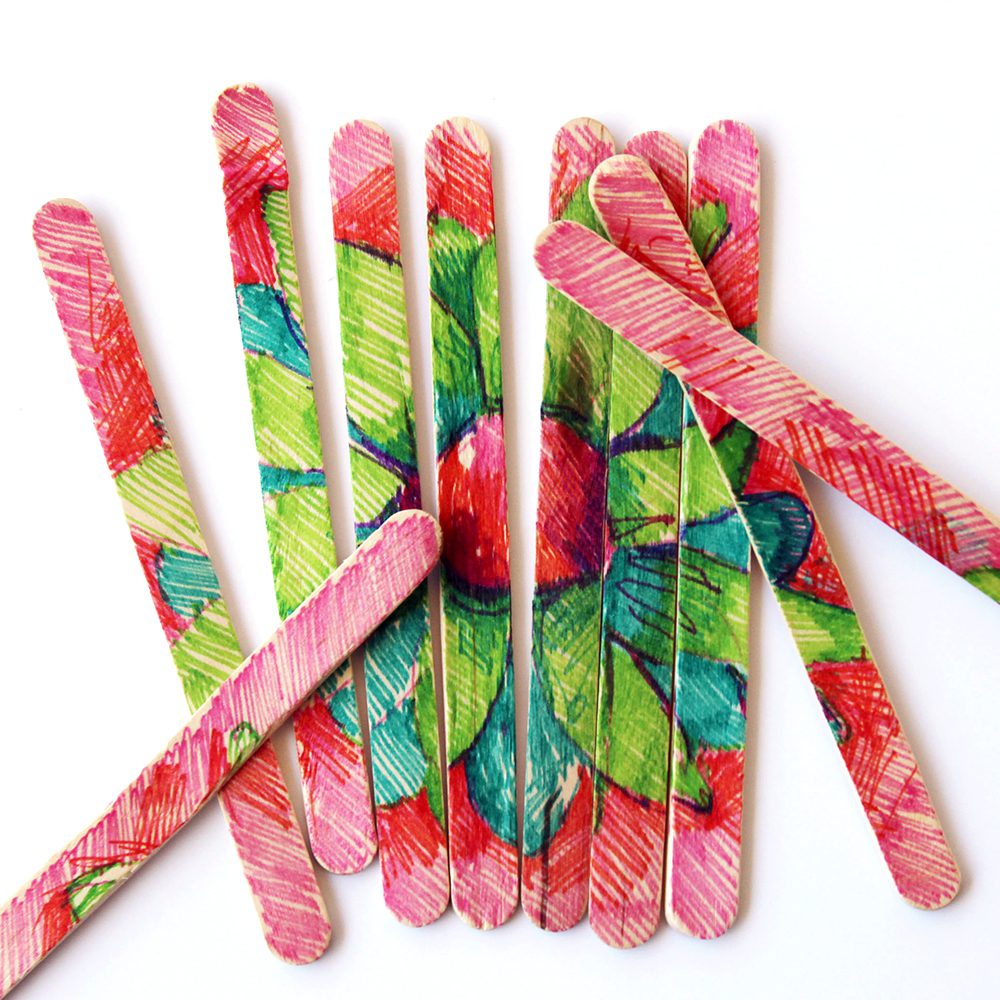
Resources
Popsicle Stick Puzzle
Make your own puzzle using popsicle sticks, masking tape, paint, and markers.
Make a handmade puzzle using popsicle sticks, masking tape, paint, and markers. This activity helps children develop creative thinking skills through pattern recognition.
- 20 popsicle sticks
- Paint
- Markers
- Paint brushes
- Masking tape
- Line up popsicle sticks on a flat surface so they are touching and the ends are lined up evenly, like a fence.
- Cut strips of masking tape and place them across the sticks to keep the sticks together.
- Carefully flip over all the sticks so the tape is on the back.
- Think about what image you would like to create for your puzzle. Will it be simple like a flower or detailed like a dragon flying over a village? Sketch the image on paper.
- Create two puzzles, one on each side of the sticks. To make it easy to tell which sticks go with which puzzle, first paint a solid color on all of the sticks on one side.
- When the background paint on the sticks is dry, use markers or paint to illustrate your paper sketch onto the popsicle sticks. Let the sticks dry.
- Once the sticks are dry, flip them over and remove the masking tape. Put these strips of tape on the other side—flip the sticks over, line them up like before and add the tape.
- Repeat the same steps for the second side of the puzzle.
Try these variations on the activity:
- Write a poem on one side and draw an illustration on the other side of the popsicle sticks.
- Use your puzzle to tell a story. Use the puzzle image as a component of your story. Tell your story verbally to friends and family or write it down.





